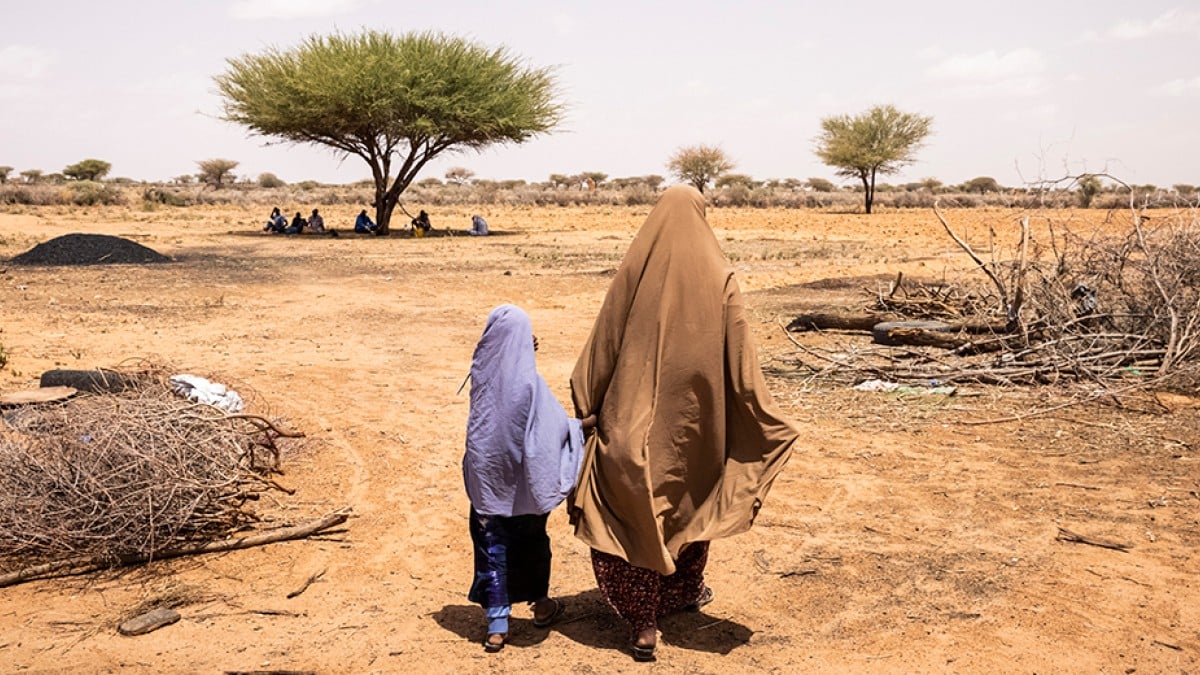

An estimated 8.2 per cent of the global population, or about 673 million people, experienced hunger in 2024, down from 8.5 per cent in 2023 and 8.7 per cent in 2022.
However, progress was not consistent across the globe, as hunger continued to rise in most subregions of Africa and western Asia. This is according to the State of Food Security and Nutrition in the World (SOFI 2025) report published by five specialised agencies of the United Nations.
They include the Food and Agriculture Organization of the United Nations (FAO), the International Fund for Agricultural Development (IFAD), UNICEF, WFP, and the World Health Organization (WHO).
The report indicated that between 638 million and 720 million people faced hunger in 2024. Based on the point estimate of 673 million, this represents a decrease of 15 million people from 2023 and 22 million from 2022.
Unfortunately, this positive trend contrasts sharply with the steady rise in hunger across Africa and western Asia, including in many countries affected by prolonged food crises.
According to the World Food Programme (WFP), Kenya remains particularly vulnerable within this broader context.
About 38.6 per cent of its population lives below the poverty line, while stunting affects 29 per cent of children in rural areas and 20 per cent in urban areas.
WFP noted that Kenya continues to face frequent droughts and floods, with 80 per cent of its land classified as arid or semi-arid.
Since about 95 per cent of the country’s agriculture is rain-fed, rural communities remain highly vulnerable to climate variability.
Kenya has also been flagged as a hunger hotspot, where climate-induced shocks such as La Niña-related droughts have deepened food insecurity in recent years.
The report further indicated that the proportion of the population facing hunger in Africa surpassed 20 per cent in 2024, affecting 307 million people.
The UN projects that 512 million people could be chronically undernourished by 2030, with nearly 60 per cent of them in Africa.
“This highlights the immense challenge of achieving SDG 2 (Zero Hunger),” warned the UN bodies, which include the Food and Agriculture Organization of the United Nations (FAO), the International Fund for Agricultural Development (IFAD), UNICEF, WFP, and the World Health Organization (WHO).
FAO Director-General Qu Dongyu said that while it is encouraging to see a decrease in the global hunger rate, progress remains uneven.
“SOFI 2025 serves as a critical reminder that we need to intensify efforts to ensure that everyone has access to sufficient, safe, and nutritious food,” he said.
“To achieve this, we must work collaboratively and innovatively with governments, organisations, and communities to address the specific challenges faced by vulnerable populations, especially in regions where hunger remains persistent,” he added.
IFAD President Alvaro Lario pointed out that in times of rising food prices and disrupted global value chains, investments in rural and agricultural transformation are essential.
“These investments are not only crucial for ensuring food and nutrition security, they are also critical for global stability,” he said.
UNICEF Executive Director Catherine Russell noted that over 190 million children under the age of five are affected by undernutrition, which can severely impact their physical and mental development.
“This robs them of the chance to live to their fullest potential. The SOFI 2025 report underscores the urgent need to act for the world’s youngest and most vulnerable children, as rising food prices could deepen nutrition insecurity for millions of families,” she said.
She called for stronger collaboration with governments, the private sector, and communities to ensure vulnerable families can access affordable, nutritious food.
“That includes strengthening social protection programmes and teaching parents about locally produced nutritious food for children, including the importance of breastfeeding, which provides the best start to a baby’s life.”
WFP Executive Director Cindy McCain cautioned that hunger remains at alarming levels while funding to tackle it is declining.
“Last year, WFP reached 124 million people with lifesaving food assistance. This year, funding cuts of up to 40 per cent mean that tens of millions of people will lose the vital lifeline we provide,” she said.
“While the small reduction in overall rates of food insecurity is welcome, the continued failure to provide critical aid to people in desperate need will soon wipe out these hard-won gains, sparking further instability in volatile regions of the world,” McCain added.
Dr. Tedros Adhanom Ghebreyesus, WHO Director-General, acknowledged recent progress in reducing stunting and promoting exclusive breastfeeding but warned that much remains to be done.
“This report provides encouraging news but also shows where the gaps are, who is being left behind, and where we must direct our efforts to ensure that everyone has access to a healthy and nutritious diet,” he said.





![[PHOTOS] Security intensified as Gachagua's supporters flock JKIA](/_next/image?url=https%3A%2F%2Fcdn.radioafrica.digital%2Fimage%2F2025%2F08%2Febbe30ce-2f64-44c7-bd47-4fb9a7669b18.jpg&w=3840&q=100)





![[PHOTOS] Leaders await Gachagua's arrival at JKIA](/_next/image?url=https%3A%2F%2Fcdn.radioafrica.digital%2Fimage%2F2025%2F08%2F24dd41c3-06c2-4ed4-808c-c144ceb8f198.jpg&w=3840&q=100)
